
Piotr Sikora: Last year Artsy called you one of the 20 most influential young curators from Europe, yet you describe yourself using the term “cultural manager.’ How do you understand this function?
Michal Novotny: Recently I started to call myself a curator because it’s an easier job description, one that most people know, but I also don’t mind having to figure out the production details. At the beginning it was kind of important to literally transport the works myself with a rented truck or car, going back and forth all over Europe. This allowed me to meet the people and kind of get a picture for the context of art in Europe. Now it’s more complicated if I’m always driving, which of course, is quite tiring. What is more problematic for me is the responsibility involved in such tasks. When you’re running a space like FUTURA, a space that has many square metres and many exhibitions per year, you are running it like a one man show. If there’s a flood, for example, someone calls me at 2:00am and I need to go sort it out, there is nobody else who can take care of this.
I studied philosophy, but when you are approaching art from an academic field, where people spend most of their lives working on spectacular research, from this point of view most research in contemporary art looks like complete dilettantism.
You’re also a young father together with the French artist Julie Bena. How do you balance all of this?
Well, I’ve been doing this for about ten years. This is already kind of unit. In the pan of a decade, the art scene in the Czech Republic (and abroad) has changed dramatically. Ten years ago, it was entirely different. In some ways, easier, in other ways, more difficult. It is art, after all, not language. What I’m interested in are ways of positioning myself against written or spoken language, which I think have become overly related to conceptual practices. Of course, it is not so simple to phrase these things, especially to phrase them precisely. It hurts, you know? I think that, for example, with the solo exhibitions, I am more trying to explain something, which for me is not obvious at the outset. When I did an exhibition with Lenka Klodova, for example, I really didn’t speak before about feminism, so for me it became interesting to speak about relations to the body, like what the body means, and also, to a certain extent, alienation. This came with how Klodova approached the body, which is still in an artistic manner. In certain ways I consider myself an artist. So it became like an ongoing art practice. I am not writing books, I am working with things I am trying to shape, which happens to be together in dialogue with artists.
At some point you dropped all of the popular categories, or at least you claim to have. You reject many terms popular in art today such as post-human, post-internet, and object-oriented philosophy. As you alluded to earlier, you look for an exhibition to illustrate art pieces, rather than art pieces illustrating an exhibition. Can you elaborate?
I studied philosophy, but when you are approaching art from an academic field, where people spend most of their lives working on spectacular research, from this point of view most research in contemporary art looks like complete dilettantism. There is a lot of dilettantism in contemporary art. In some other ways, however, dilettantism can be productive, too. The fact that you do not fully understand something can lead to something good. Czech Cubism is a form dilettantism in that most of the artists didn’t fully understand what Cubism really was about, that it was all about perspective. Yet, they were taking certain patterns and forms in order to create something visually similar to it. History tells us that this was definitely worth it. So it’s not that I would be against theory in art per se (nor that it’s impossible to do it, there are people who are doing it well, like Jan Zalesak, for example), it’s just that in my own work I try not to base it on theory, but base it on the artworks themselves. For me, the key to everything is always the art. When I started out as a curator it was because of the artworks, not because of some theory. It doesn’t mean that I’m not conscious of theory, just that I am suspicious of them. For me, they can be easily instrumentalized.
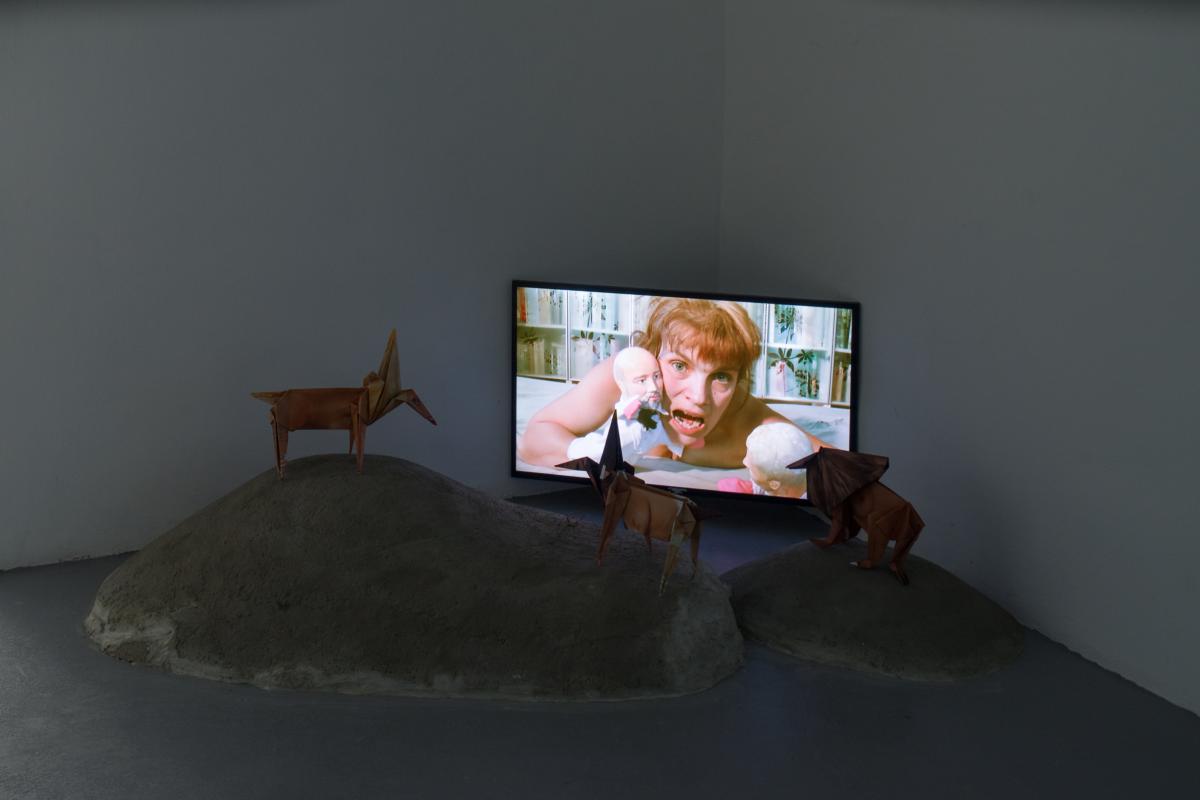
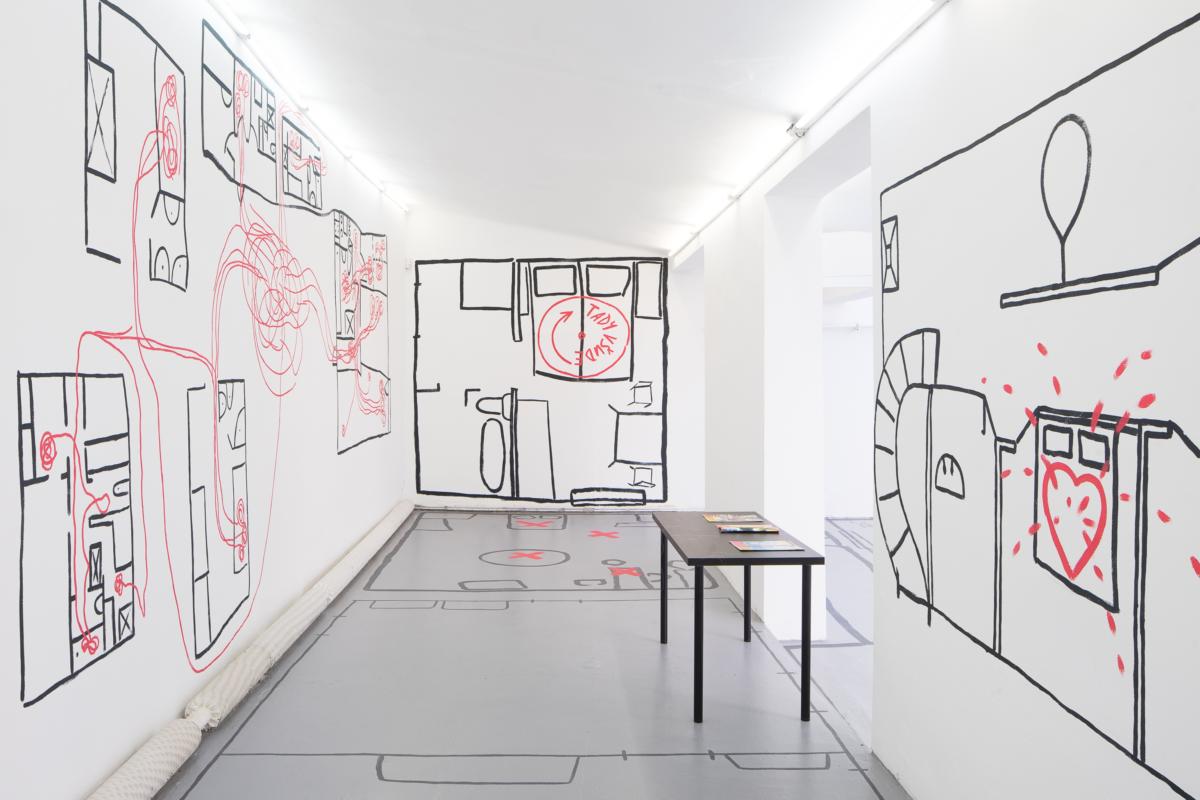
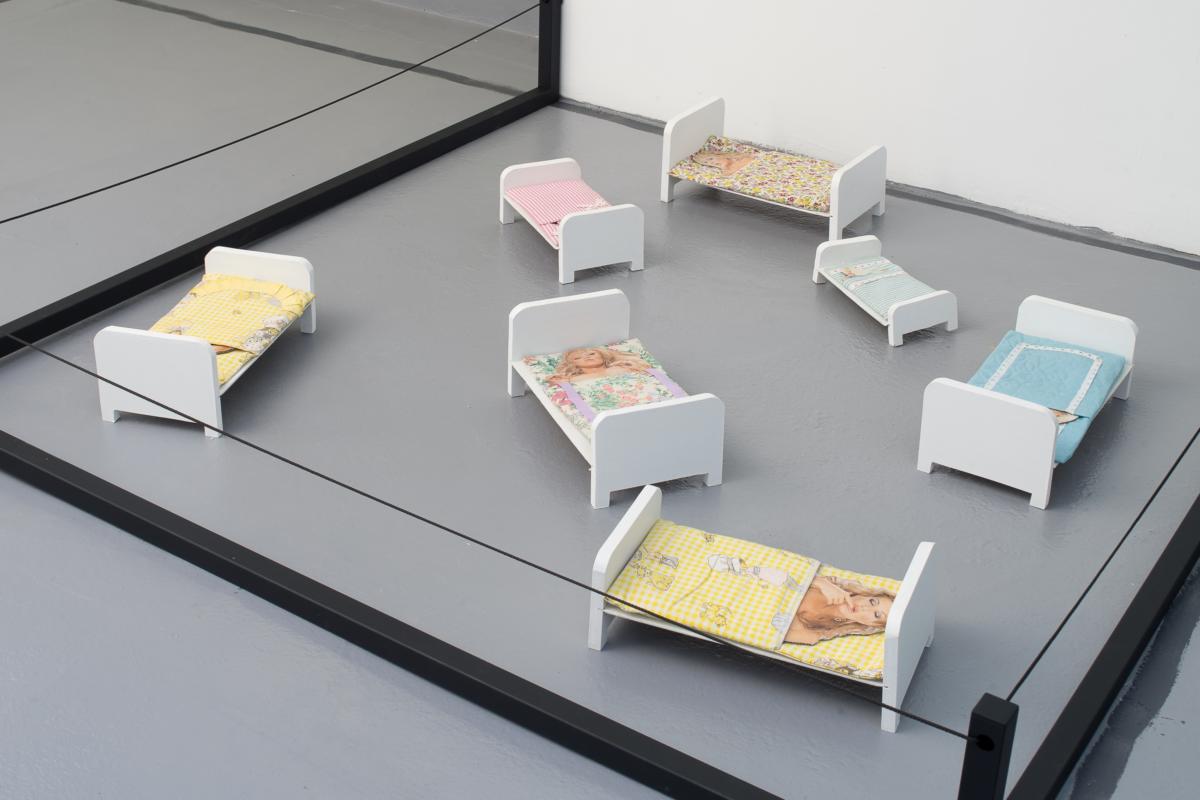
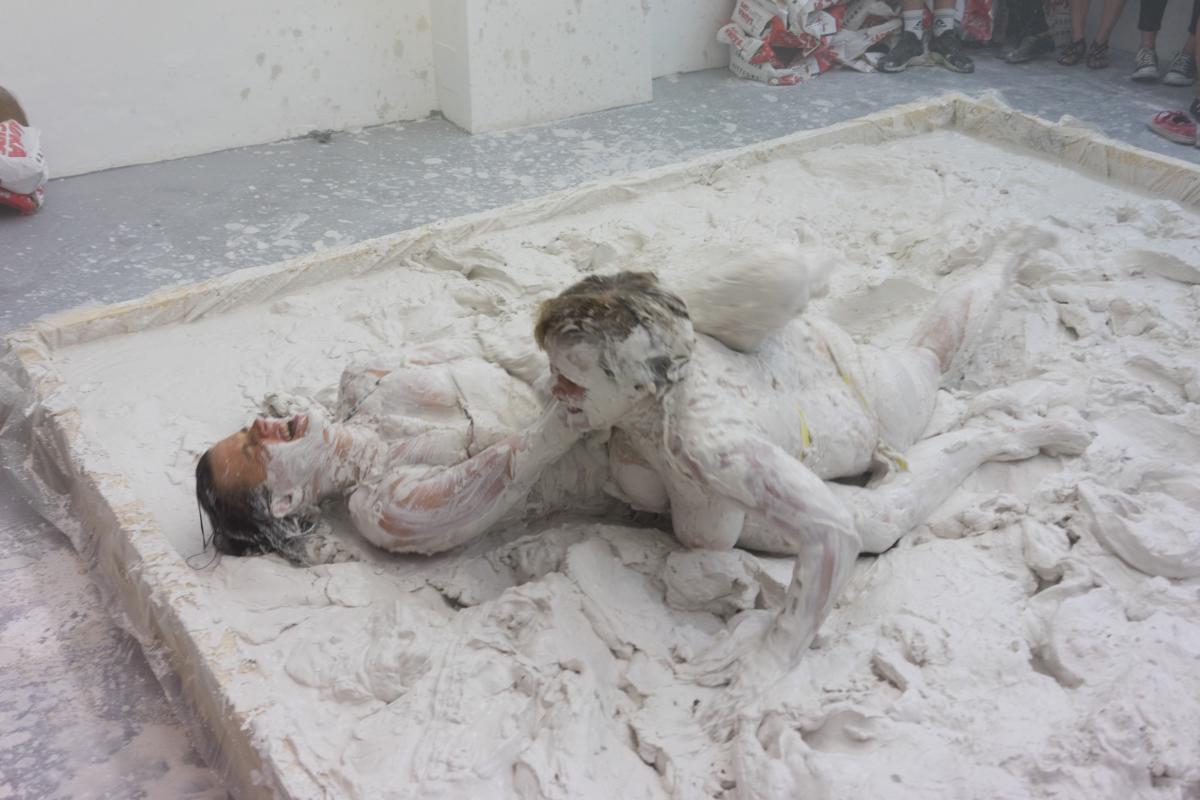
You often get back to categories such as obscurity and fragility in your exhibitions. Don’t you think these can be dangerous for artists who may use them? In that they can be easily co-opted and employed within a capitalist or accelerationist framework, thereby also more easily absorbed by the market?
In some ways I am a Marxist, in other ways, I really disagree with any general pattern applied to everything. We need to consider things individually. I think conditions always need to be understood specifically. Exhibitions are defined by their connection to a specific place, a specific context, and so they have specific conditions. In exhibitions such as Club Fiesta or Preparatory Portrait of a Young Girl, both of which I did earlier this year in Ostrava, they each had a specific context, which I think was responded to. I am not scared of the fact that art can be appropriated and abused, I think art is very good at dealing with this. Of course, I am critical of accelerated art development that is generated by the market, but I think there is also a kind of auto-correction at play, and that art can balance this. What I am interested in recently is the dichotomy between the good and bad, which seems to be inherent in a lot of western art. Consider for example art that has some kind of quality that grows from the core of it, which I don’t think is true. The context is what matters, the infrastructure also matters, so many things matter in terms of the way we judge art. What I am aiming for is how to do the bad things well. Like how to build on something that could be bad, but to do it well. This is also the magic of curating, in that you can really make something better.
Your definition of the ‘dilettante’ approach could also have to do why many people are, in a sense, perplexed or alienated by a lot of contemporary art. Ofteh curators use elaborate language to give exhibitions this kind of veneer, overcomplicating art to the point where it has become almost un-understandable.
I don’t think so. I think art is overly specialized. Even if you think of post-medium, you can say that art is special because we are in a post-medium situation, we are no longer bound to the painting like literature is to the book. When in fact contemporary art is a medium in and of itself, the strongest medium. You cannot do anything at all without it being bound to what is being done today. This framework makes contemporary art understandable and able to circulate. This is also why I say that I am against quality, when it’s really the infrastructure that creates quality. For me there is not much difference between the infrastructure and the actual art works. We are in the frame of post-structuralist thinking, which is—especially in art—created by the medium of contemporary art itself. My problem is more with the term interdisciplinary— there is no interdisciplinary.
Art is overly specialized. Even if you think of post-medium, you can say that art is special because we are in a post-medium situation, we are no longer bound to the painting like literature is to the book. When in fact contemporary art is a medium in and of itself, the strongest medium.
In what sense?
You are always seeing the other discipline from the point of view of your own. So a philosophy of contemporary art becomes a bunch of people who give priority to doing philosophy in the field of contemporary art. But why aren’t real academics ever invited to curatorial talks? Like people who have worked for forty years on Hegel and who can actually teach us something about his ideas? We have a couple of people who are writing art reviews tinged with philosophy in art—this is not interdisciplinary, it’s more what I don’t like. These are pseudo-philosophers or pseudo creators of knowledge, they are just creating a field of knowledge that fits into a pre-existing structure. Again, of course, everyone needs a niche to survive, and you need to find ways of putting yourself within a structure, but it is, unfortunately, not the other way around. I would like art to go deeper. In that I would like to see a person who is talking about philosophy as someone who really understands it, not just someone who is making a career in art. Otherwise, it is super specialized. The trends are so quick that you have to follow when one thing happens in a small circle of people. Even in Europe, the art world is tiny. So it ends up all being super-specialized research, not unlike other disciplines like chemistry, for example, where you choose one molecule and will likely devote your whole professional life to this one molecule. If you’re good, maybe it will go somewhere!
What is FUTURA?
FUTURA is a non-governmental and nonprofit contemporary art center. In some ways, it is the best combination. In other ways, the worst. We are not a subsidiary organization, in the sense that we do not get money from the state. We live from public funds. None of our budget comes from a single beneficiary, meaning that we need to apply for funding for everything we do. This means we do not have to worry about conforming to the whims or to the aesthetics of a private funder who is able to influence our programming. Originally, FUTURA was established as a foundation 14 years ago by Alberto Di Stefano, an Italian developer, architect and art lover, who opened the space with the intention of introducing a western standard and model for a contemporary art space to the Prague. Things were a lot different back then, however, especially in contrast to today.
In what ways different?
Well, for starters, there was nothing international about Prague at that time, none of the institutions that exist today existed then, meaning non-governmental art institutions. None of the art centres like DOX, Meetfactory or Tranzit had opened yet. The scene was still very localized, only a couple of out-of-action artist-run spaces mainly exhibiting their friends existed. So the aim with FUTURA was to bring something else. At the beginning, this meant that Alberto was paying out of pocket for literally everything: the space, production, marketing, etc. After the financial crisis in 2008, however, Alberto had to take a step back and reevaluate things. In the end, he could not sustain FUTURA without support.
So when I came to the gallery in 2011 it was facing big financial problems. The space was in dire need of renovation, everything was kind of destroyed. Even the previous team working at the gallery had expected its closure was imminent. So I had to change it, which operationally speaking, consisted of transforming it into non-governmental nonprofit. This transformation was again based on a western model. In some ways, you could argue, this makes us quite obsolete because many of the non-governmental and nonprofits in western Europe have had to transform themselves into other kinds of institutions, either partially state-funded institutions, or into foundations, or something as a hybrid between them. But with the climate and state of contemporary art institutions in Czech Republic today, with the support of the Ministry of Culture, 100% of which runs on state money, and usually from these public open calls for funding, this has become quite relevant again, at least for us. This model also has many drawbacks, principal among them that we need to request money for all of our operations and functioning. The structure is able to sustain us for now by allowing us to have two full-time employees consisting of myself and Caroline Krzyszton, who is in charge of the residency program and Karlin Studios.
So Karlin Studios are also a branch of FUTURA?
Yes, indeed. In 2005, Alberto initiated and even did an actual architectural project for conversion of the Karlin Studios, which are housed in a former factory. This became a venue for artists studios, an exhibition space, office space, and for our archives. For many years the Czech Center for Contemporary Art also had an office inside, as well as Umelec Magazine. Unfortunately, this space closed down and was demolished due to gentrification. Now they are building housing and office units in the former Karlin Studios. It was after this that we moved to another venue owned by the Ministry of Justice, which for the moment is only an exhibition space with room for two artists-in-residence. This leads to 2006, when FUTURA established its first residency exchange programme, beginning firstly with a partnership with the CCA Ujazdowski Castle in Warsaw, and with Space Gallery in Bratislava (which doesn’t exist anymore). This eventually led to the introduction of the residency grants from the Visegrad Fund, which are still operational. These initiatives were all based on a system of mutual collaboration, mainly with institutions in Europe but also increasingly from the Middle East, some also offshore, recently in New Orleans and Yogyakarta.
I think it often happens, in Central and Eastern Europe for example, that you bring works that are already known. In the age of the internet, however, this approach is not so relevant. So what I have been trying to do is to bring artists and work with them in situ.
I’m wondering what else you did to establish FUTURA as an accommodating and desirable space for artists from Europe and abroad to exhibit? And can you comment on whether there were any differences you considered between “eastern” and “western” models of organizing the residency programme?
I try to follow a specific mission that I liken to fixing a hole. In the early stages, this meant addressing the fact that there were limited international artists and curators coming to Prague. By the time I had started at FUTURA the situation was already much different then it had been in 2003/2004. So I began by trying to reconnect to the local art scene, firstly by trying to find ways to integrate with local artists. At that time, many curators running art spaces had articulated missions using this kind of exclusive language, saying things to me like, ‘I run my art space like it is anywhere else in the world, I do not make any link specifically with the local art scene, I am just observing everything globally,’ which I started to think wasn’t true. We are always in a specific place and we are always in a specific context. So one of the first things that I tried to do was to come back to the local art scene by delivering services that, strangely enough, were missing in Prague at the time. For example, at that time there were about 30 to 40 artist-run spaces in the city. These created and helped foster a very vibrant and diverse art environment. Yet, we were also waiting for a museum of contemporary art to arrive, one that would reevaluate works by presenting large retrospectives, for example, or large books and catalogues, leading eventually to a large institutional collection that, I believe, would help the scene grow dramatically. FUTURA cannot be this institution for obvious reasons. So one of the things that I started to do was to invite mid-career artists for retrospective exhibitions, which I was able to facilitate because of the sheer size of our exhibition space. Together, FUTURA and Karlin Studios give us about 1000 square metres of exhibition space, a huge amount by any measure. So even if you don’t have the money you can somehow use the space. Apart from this, I also started to invite younger artists to their first institutional exhibitions, but I was always looking for underrepresented people. Always taking as a kind of starting point with a question I would pose to myself: ‘what’s missing?’
And did you discover any sort of magic formula?
FUTURA, for the first six or seven years, was mainly bringing individual art works. I think it often happens, in Central and Eastern Europe for example, that you bring works that are already known. In the age of the internet, however, this approach is not so relevant. So what I have been trying to do is to bring artists and work with them in situ. Once they are here working on a new commission then the artwork comes into existence by accepting the nature and dimensions of the space itself. So I try to become part of a mechanism of art production, rather than act as a sort of vitrine for western art and known names. I travel a lot throughout eastern Europe and what I see is that a lot of the art scenes and art spaces are always characterizing themselves with this language of exclusion we were just discussing. They will always tell you: ‘we don’t do this, we don’t show any painting, we don’t show traditional media,’ etc. So they are not trying to be inclusive, they are trying to be exclusive. They only focus on one line, whatever they find and describe as ‘good.’ I was speaking to a curator in Bucharest recently and she said, ‘Ah I don’t like this post-internet.’ For me, this is a problematic thing for a curator to say. You are just dropping one tendency that might be problematic, maybe criticizable, but obviously present. So my point is more to try to find the good in everything, which I think is ultimately what curators should be doing.




This seems like a very positive approach. Do you have anything to criticize?
Of course I do, a lot. I think the biggest problem of the institutional infrastructure here in Prague is that two generations of artists, from the 1980s and 90s, never exhibited in a state-run institution, nor with an appropriate budget. This is why I am, of course, doing this, but also in some ways it’s a joke. The exhibitions we are doing here at FUTURA are not proper. They are reading the work from the eyes of young artists. As I said, it’s complicated. What is typical, however, especially in eastern EUrope, is that there is a gap between state institutions and the alternative, local, progressive art scenes. This gap has been extremely visible in Prague with the previous director of the National Gallery, for example, who is largely seen as untouchable. It’s a political question of not wanting to be seen as changing things from the inside. But in the end you just end up staying outside, which I am conscious of as not good. The only way to progress is to actually change institutions from within.
Or to try to establish new institutions.
Yes, precisely. Pragmatically, let’s say we are in competition with the National Gallery. However, I think we cater to vastly different publics. These publics do not overlap that much at all. With the budget and the scope that FUTURA has it’s a ridiculous comparison even. On the other hand, these kind of critiques from the alternative spaces towards bigger institutions have also been institutionalized and used productively. It’s a healthy part of progressing. I agree, however, that there is a problematic way of thinking and leaving out this hybridization of sorts. In fact, however, the National Gallery is also a hybrid of sorts, in that it’s not very clear what the role of the institution is, or even what it’s spatial or conceptual limitations are, or who should be credited for which exhibitions and where the accountability ultimately lies remains pretty vague. Similarly we have this problem with FUTURA, in that from the outside we look like we’re a fairly professional and established space, but once you enter you immediately realize that we are just two people, there are no assistants, we don’t have studio assistants for the residents, things just don’t fit with the impression. This often leads to a sense of disenchantment with artists that come from the west, because they don’t know how to react to our situation. They think we are this proper international institution that can provide a certain level service, but when they arrive there is often this cognitive dissonance that sets in. They don’t know how to react because they never experienced a similar sort of situation.
The biggest problem of the institutional infrastructure here in Prague is that two generations of artists, from the 1980s and 90s, never exhibited in a state-run institution, nor with an appropriate budget.
Were there any watershed moments for you? An important experience that you can pinpoint that helped establish FUTURA or your method working there? Perhaps an exhibition that changed the way you perceived FUTURA, or one that changed the way you developed the programming?
The game-changer was an exhibition with Hito Steyerl that was canceled, the reason being disagreements over the preparation. In the end, it showed our incapacity to provide enough of what was requested, alluding to what I was describing in my earlier answer. At the time, I understood that it was wrong to be aiming for artists like Hito Steyerl, and it was also her general busyness that caused the cancellation of the show. For her, we were likely not an attractive option because we were unable to provide the level of coordination afforded to her by more well staffed institutions. So afterwards I started to think of what we could do to differentiate ourselves, what we could do differently than just hosting superstar artists, which tend to be for a huge amount of money that we don’t really have. So after this, I tried to approach international art from a different vantage point. Artists that are maybe not so much under the spotlight, which I think also tries to tackle the problem of stardom in contemporary art, i.e. this constant fetishization and repetition of household names. Due to the conditions we have, we don’t have time to be working several years on a single project. We have over 15 exhibitions each year, so we cannot be taking a plane to London once every two months to discuss an exhibition, which I think is more the context of an institutional curator, one who enters into discussions with artists on a long-term basis. Unfortunately, we are in some ways a factory. If you are working with artists, they don’t always need hours of discussion about their work. Often they just need material and some physical management of the production side. As I said, I started to work in art because of artists so for me, it is important that the artist is happy with our collaboration, and there are very different ways artists approach collaboration with us as a result.
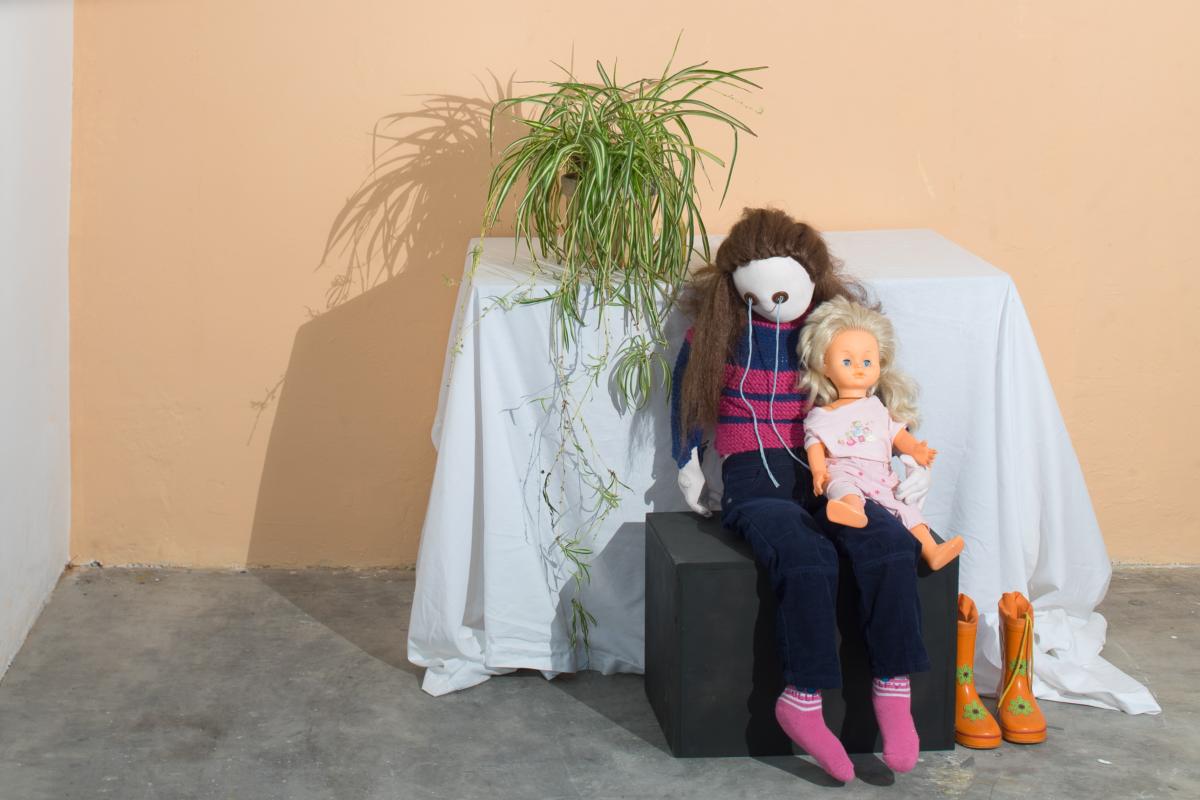
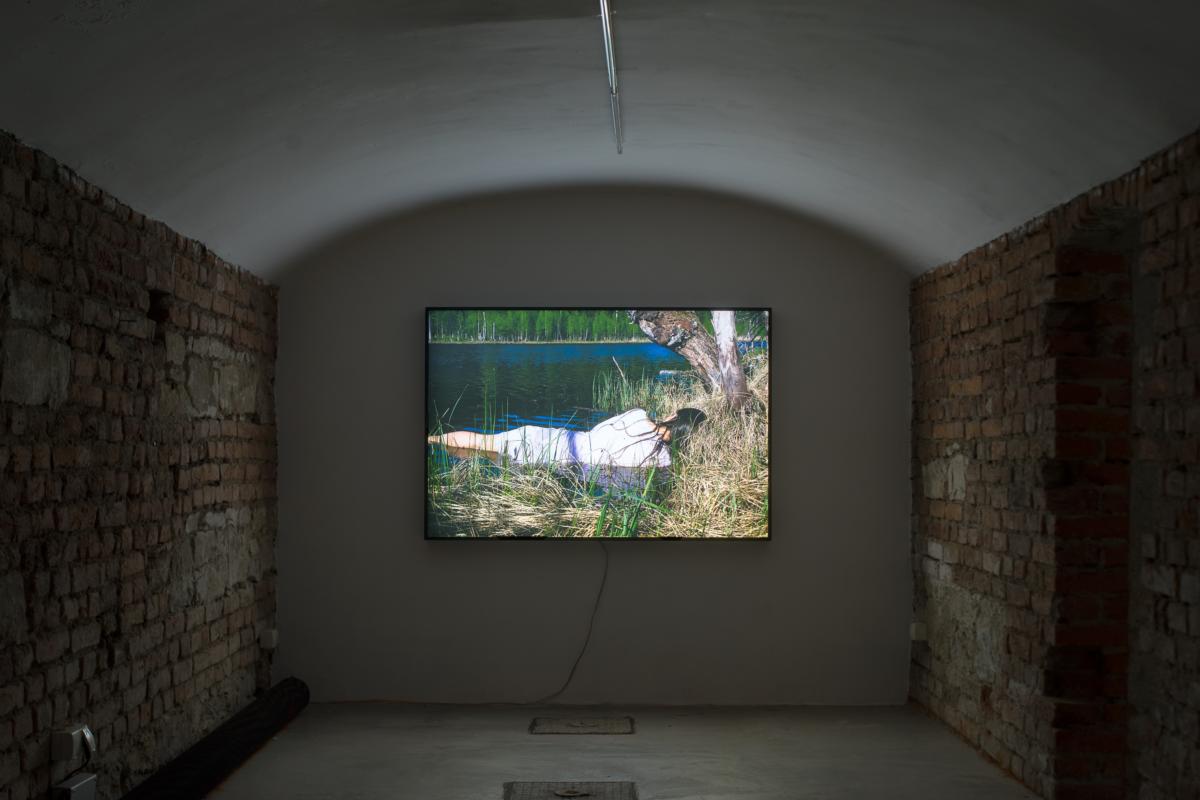
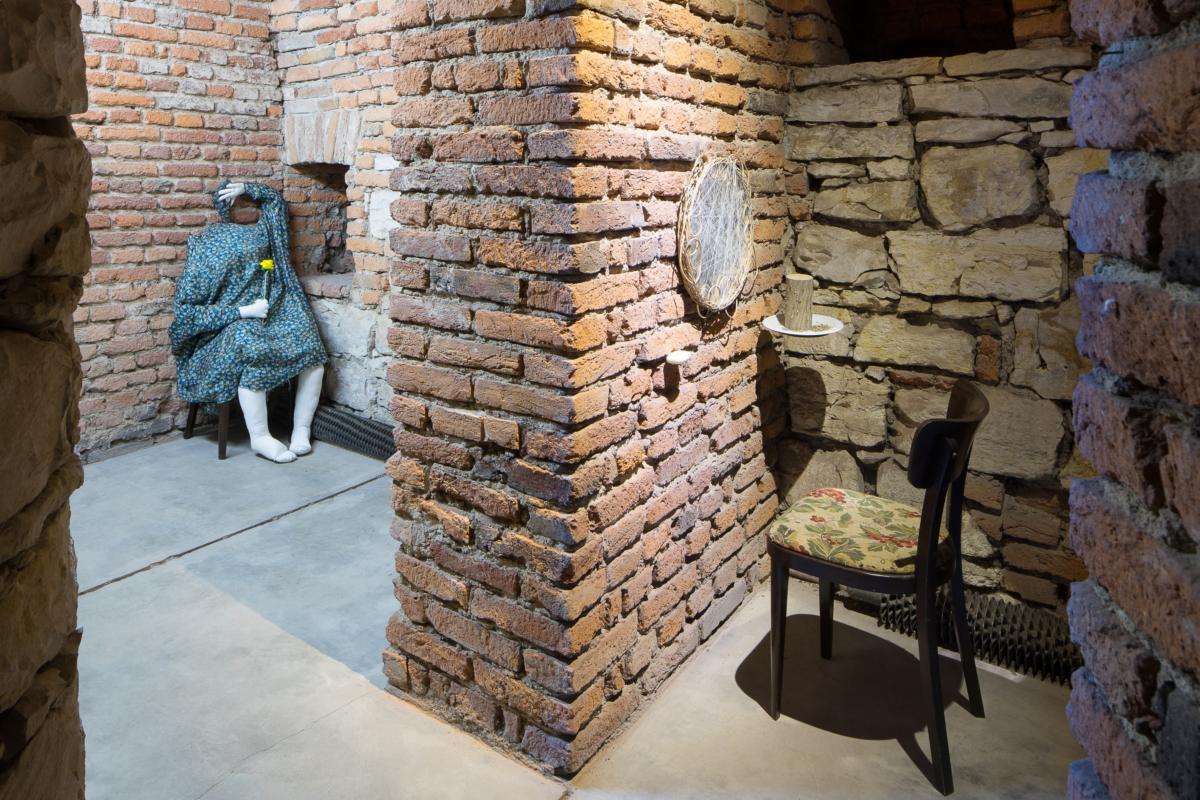
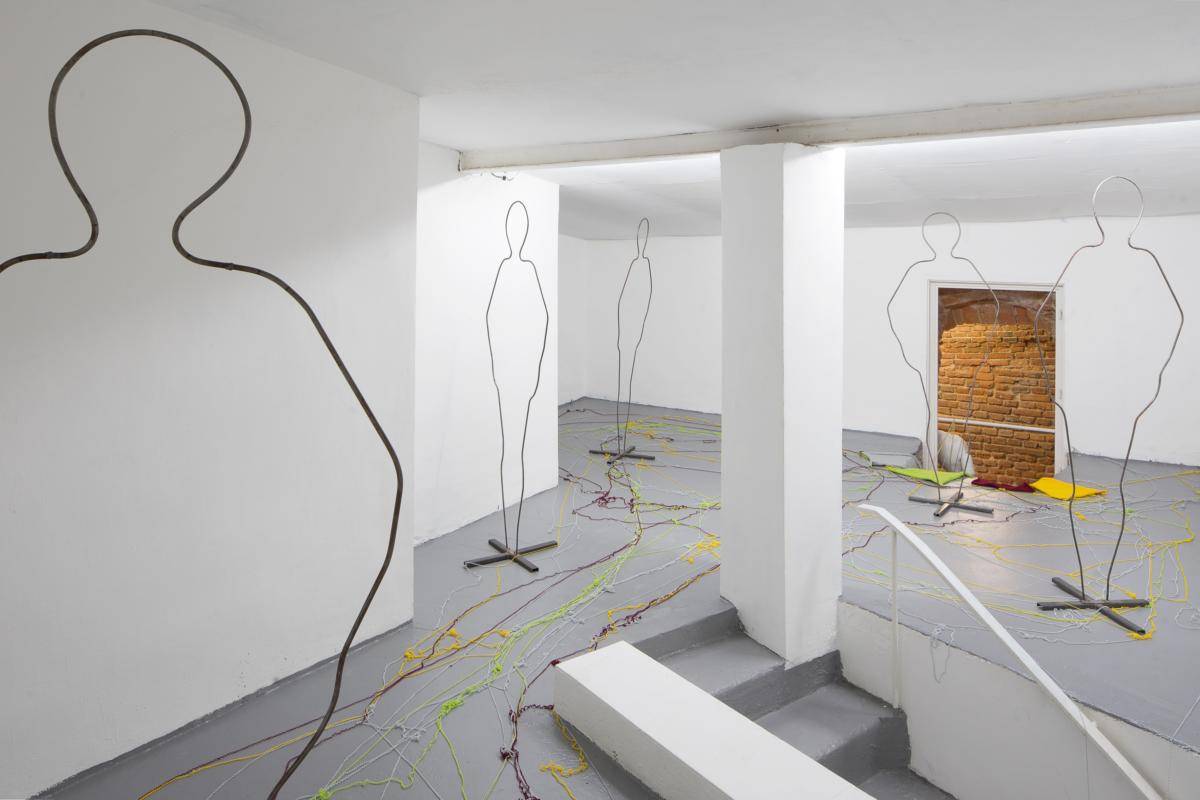


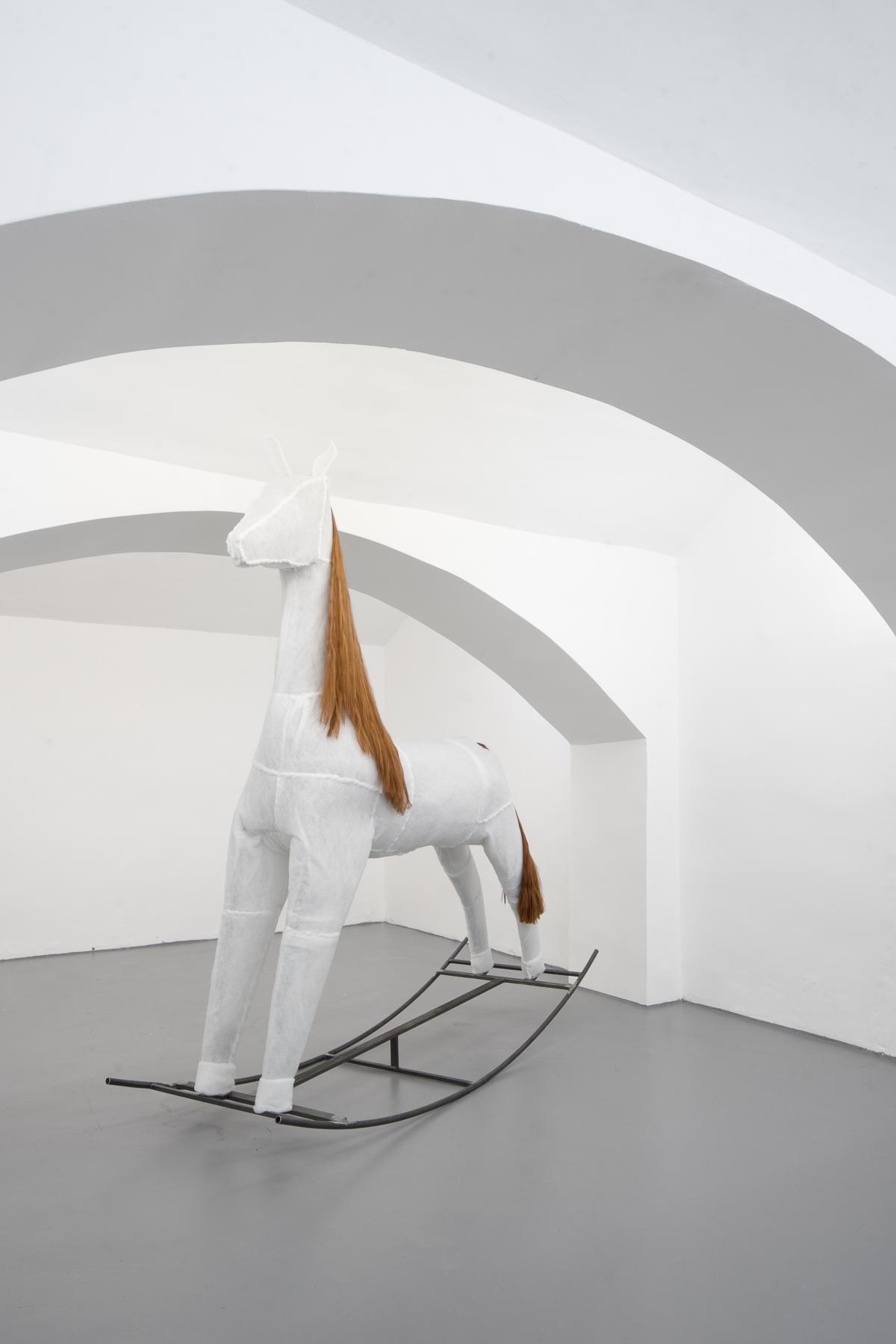
Where do you see the Czech art scene going in the next several years? In your opinion what’s needed for it to further develop?
I think the next step would be to have some kind of cultural development strategy, which at present, is amiss. This would allow the Minister of Culture or the municipality of Prague, for example, to coordinate and create more opportunities for spaces to transform themselves. Presently, we have cultural policy in the Czech Republic that does not think in terms of change. For an institution like FUTURA, you can get money that will amount to around 40-50% of your operating budget, but nobody really counts. But there is no thinking about the broader implications of this and for how it can transform. In short, we have reached a level that is functioning well, but to answer your question: where do we go next? Nowhere, we can just stay where we are.
Isn’t that like a bit like shooting yourself in the foot?
I think I’m quite effective in managing these things, but I don’t think I’m so effective in the politics.
I’d like to bring up Pierre Bourdieu, the French sociologist and philosopher who argued that there is an inherent class system hidden within art. And to a broader extent, within the language that we use to describe art. Would you agree?
I think Bourdieu is kind of hopeless, to be honest, as are a lot of his contemporaries associated with post-structural thought. I’m not saying that I don’t believe in a genius and a spirit, but I also don’t believe the entire product of the structure in the way that Bourdieu explains it. What about art? There seems to be a constant movement within art from lower to higher, circular in a way, which I find quite depressing.
I think there is only one movement, from lower to higher, and it doesn’t go backwards.
Yeah, as you know now there are also dandies who are appropriating parts of high culture even though they are working class. The problem in France is to a certain extent the same problem we are going through in the Czech Republic, where to paraphrase Bourdieu: hypocrisy tends to favour to the brute. Hypocrisy is good in some ways because it creates a working society. In France they don’t give a shit about art but at the same time nobody will say what’s crap, or ‘we are not going to pay for this, it belongs to the domain of education,’ i.e., accepting what art is good and what isn’t, even though it’s all one giant hypocrisy. So in the end, even hypocrisy can be good. The problem is that we do not even get the hypocrisy because people are just feeling aggressed by it all, and the media are always adding to the fire, of course, by showing what idiocy has been made, or what other idiocy has been sold for 10 million euros.
Imprint
| Index | Alberto Di Stefano FUTURA Jan Zálešák Karlin Studios Lenka Klodova Michal Novotný Piotr Sikora |
